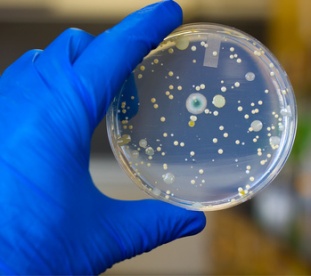Find a Mold Specialist Now
Click or Call, Toll-Free 24/7
Mold Levels In the home
People often ask us what mold levels in the home are considered safe. It's a reasonable question, considering nearly everyone has heard about the numerous health risks associated with exposure to mold (and if you're not familiar with those, you can read about them). While it's a good question, unfortunately there is no straightforward answer. There are currently no established safe levels of mold. According to the Centers for Disease Control and Prevention (CDC), any exposure to mold is potentially harmful.
So how do you know if you have hazardous levels of mold in your home?
You Can Have Your Home Tested for Mold
If you want to know what kinds of mold are in your home and what mold levels are present, you can have your home tested for mold. There are do-it-yourself mold tests available and you can read more about those by following the link. We don't recommend them because they are not always accurate, many only test for a few types of mold (and there are more than 300 strains of mold sometimes found in homes in the United States), and the results can be difficult for most laypeople to interpret.

We recommend having a professional test your home for mold instead of using a do-it-yourself test kit. Most professionals that test for mold are actually engineers and they are highly trained to conduct tests with accuracy and precision. They will also be able to explain the results to you, including what types of mold were found (there are often several different types of mold present in the home at the same time) and how the levels of mold in your home compare to the levels of mold outside, and to other homes in your area.
That's not quite the same as telling you if the levels of mold in your home are safe, though.
So What Are Safe Levels of Mold?
Unfortunately, we often don't know. It can vary from person to person. Some people may get sick when exposed to just a small amount of mold, while others may seem unaffected by even large amounts of mold in the home. In general, the more mold in your home, the greater the likelihood you'll become ill from it. In addition, the longer the mold remains in your home, the greater your risk of mold-related illness. Of course, most types of mold grow rapidly, so the longer the mold remains in your home, the more mold there will be.
Some people are at greater risk for mold-related health problems than others, so mold levels that may be “safe” for others may not be safe for them. Those most susceptible to mold-related health problems include:
- people that are allergic to mold (when you are allergic to something, that means your body responds to small amounts of something that is normally harmless as if it is a great threat, triggering an over-the-top immune response)
- infants and small children
- elderly people
- pregnant women
- people with asthma or other breathing problems
- immunocompromised people – that is, those with immune systems that are not functioning properly, whether due to illness, medications, or other reasons
This does not mean that exposure to mold is safe for other people, however. Even healthy young adults can become ill due to mold exposure.
So Should You Have the Mold Levels in Your Home Tested?
It's not always necessary, but there are times when having your home tested for mold can be useful. Consider having your home tested if:
- You suspect mold might be present but aren't sure, or you know mold is present but aren't sure you’ve found it all.
- You want to know what kind of mold is present in your home – the Centers for Disease Control and Prevention says in most instances, it's not necessary to know this because all types of mold should be considered potentially harmful and should be removed, but if you're experiencing mold-related health problems and need to know what kind of mold is in your home or want to know for some other reason, you can have your home tested.
- You've had mold removed from your home and want to make sure it's all gone – the U.S. Environmental Protection Agency (EPA) recommends having your home tested for mold after mold removal, and a mold removal company should come back to take care of things at no additional cost if any remaining mold is found.
To find qualified professionals that test homes for mold in your area, just follow the link.
Return From Mold Levels To Our Main Mold Health Issues Page
Privacy Policy Terms and Conditions Accessibility Do Not Sell My Information Disclaimer Contact Us




